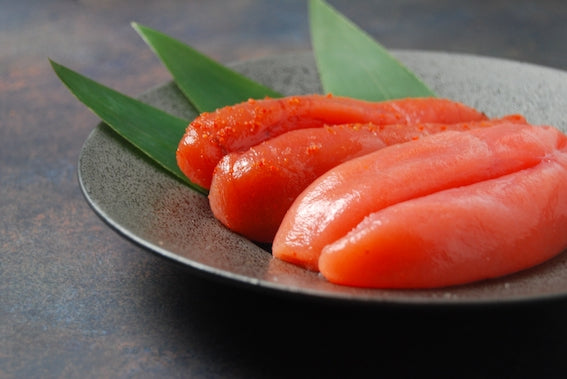Tarako vs Mentaiko: What Are They and What's The Difference

Japan is a seafood lover’s culinary paradise. There is a little something for everyone. One such delight is roe, fish eggs, that can be found as toppings on sushi, a paste to nibble or spread on toast, a stuffing for onigiri, mixed with pasta sauce, and for many other things.
Perhaps the best-known types of roe in Japan are tarako and mentaiko, but what are they and what is the difference? How are they the same?
The short version for their similarity is that mentaiko is tarako, but tarako is not necessarily mentaiko. To throw some confusion into the mix, mentaiko is the word for tarako in the Fukuoka dialect – they originally meant the same thing.
Both mentaiko and tarako are salted pollack and cod roe and are purchased either chilled or frozen. They both are used in a variety of simple recipes, are both popular across Japan, and can be readily found in nearly any supermarket.

Tarako
Tarako is neutral shades of beige-pink, is reasonably small in size, and is usually sold with the sac intact. It is typically eaten on a bed of rice or a shiso leaf or eaten as an affordable caviar. Tarako initially appeared in Korea during the Joseon era and made its way to Japan during the early Edo period. It is found in Japanese, Korean, and Russian cuisines.

Mentaiko
Mentaiko, on the other hand, is a soft pink to a vibrant red in colour and is marinated in varied chilies and spices to create a variety of flavour profiles. Originally, mentaiko made its way from Busan to Fukuoka shortly after WWII where it soon became Fukuoka’s regional specialty. It is there that you will find the biggest selection and variety to sample from.
So whether or not you enjoy plain or spicy, there is something to be found for everyone from these two simple foods.
Try our artisanal mentaiko which is lightly smoked using sakura (cherry blossom) chips (also available in our Foods That Pair With Alcohol: "Otsumami" Care Package.
About the author:

Donovan, who goes by the pen name D.A.Kelorii (deliberately without spaces), was first introduced to Japanese culture when they were very little with shows like Astro Boy and Space Battleship Yamato. At just ten years old, their first word learned in Japanese was itadakimasu, roughly: let’s eat! Over time, their study of Japan ventured into stories, literature, history, and cultural studies. Eventually, Donovan arrived in Japan on a Working Holiday Visa where they lived in Saitama for a year and worked at the Butler’s Café in Shibuya. A decade later, they returned to live in Sapporo while working on the JET Programme and completing their MA in Creative Writing. Their goal is to attain permanent residence, just a couple more years away, and to open a café to do what they love best – being a barista. Donovan’s other hobbies include photography ( @escapistcat on Instagram ), PC gaming, writing fiction, a catlike exploration of the world, trying new foods, and most importantly: ramen.




